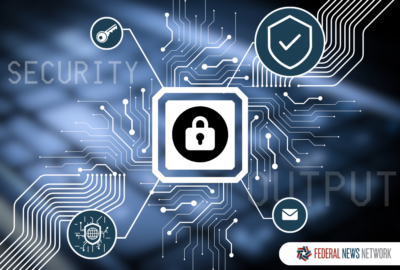Happy birthday to the National Park Service
The National Park Service turned 100 this week. Former Homeland Security Department CHCO Jeff Neal celebrates America's "best idea ever".
This column was originally published on Jeff Neal’s blog, ChiefHRO.com, and was republished here with permission from the author.
Aug. 25 marked the 100th anniversary of the establishment of the National Park Service (NPS). Historian Wallace Stegner said national parks are “the best idea we ever had. Absolutely American, absolutely democratic, they reflect us at our best rather than our worst.” From Yellowstone to Yosemite, the Grand Canyon to the New River Gorge, our national parks represent one of the great accomplishments in our history.
Just looking at the names of some of our parks, you can see the history, diversity and grandeur of this collection of national treasures: Gullah/Geechee. Chickamauga. The Great Smoky Mountains. Shiloh. Devils Tower. Mount Rushmore. Zion. The list goes on and on. Including National Parks, Military Parks and National Monuments, the number is over 400. Virtually every American is near or a short drive away from a national park site. I grew up near the New River Gorge National River and still enjoy visiting that magnificent area.
Most of us have been to a national park, but we do not always think about the impact of parks. Fortunately, there are people who do look at things like that and the news is good. A recent study by Michelle Haefele and John Loomis of Colorado State University and Harvard’s Linda Bilmes looked at the Total Economic Valuation of the National Park Service Lands and Programs. Their findings, combined with other data regarding the economic impact of our parks, are staggering. Haefele, Loomis and Bilmes concluded: “Our estimate of the total economic value to the American public is $92 billion. Two-thirds of this total ($62 billion) is for National Park lands, waters and historic sites; the remaining $30 billion is attributed to NPS Programs. The estimate, which is based on very conservative assumptions, includes not only the value attributed by visitors to the parks, but also a significant ‘non-use’ or ‘existence’ value. This is the value derived by the public from simply knowing that NPS assets are protected for current and future generations, regardless of whether or not they actually choose to visit.”
Another way of looking at national parks is their direct economic impact in their locations. The National Park Service 2015 Visitor Spending Effects Report shows the economic impact of national parks and monuments on their surrounding areas and state and national economies. Headwaters Economics has an excellent interactive that makes the data even more searchable. The numbers are remarkable. The world’s first national park — Yellowstone — had over 4 million visits in 2015. Those visitors spent almost half a billion dollars, created 7,735 jobs, and produced $224 million of income for workers. The New River Gorge in 2015 had almost 1.2 million visitors who spent over $50 million, producing more than $20 million in income. With the state of the economy in southern West Virginia, those numbers are important. In total, our parks had more than 307 million visits in 2015. Those visits produced almost $17 billion in spending and over a quarter million jobs. And that was in just one year.
The National Park Service is a large agency. It has a budget of $3.3 billion. That is a lot of money, but it is much less than we spend for many other parts of government (Congress, for example, costs almost $4 billion per year). Given the tremendous economic impact of the national parks, their budget is a bargain.
President Theodore Roosevelt, one of the great supporters of our national parks, said: “There can be nothing in the world more beautiful than the Yosemite, the groves of the giant sequoias and redwoods, the Canyon of the Colorado, the Canyon of the Yellowstone, the Three Tetons; and our people should see to it that they are preserved for their children and their children’s children forever, with their majestic beauty all unmarred.”
One last point — in this post I have consistently referred to “our” national parks. That’s because they are. These parks and monuments belong to every American. Rich and poor alike can enjoy them. Entrance fees for the parks that have them are modest. Annual passes are available for $80 that provide admission to every park. Free passes are available for our military and their dependents. $10 annual passes are available for those 62 and older. Free passes are available for people with disabilities.
Congratulations to the National Park Service on your 100th birthday and best wishes for many more centuries.
Jeff Neal is a senior vice president for ICF International and founder of the blog, ChiefHRO.com. Before coming to ICF, Neal was the chief human capital officer at the Department of Homeland Security and the chief human resources officer at the Defense Logistics Agency.
Copyright © 2025 Federal News Network. All rights reserved. This website is not intended for users located within the European Economic Area.







